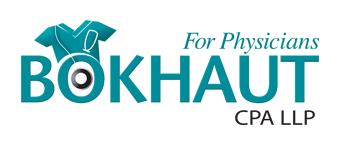
First Home Savings Account (FHSA) – Newly Announced Updates to the Program
This article has been updated for the draft legislation proposals from the Department of Finance ‘Design of the Tax-Free First Home Savings Account’ Backgrounder, released August 9, 2022..
On April 7, 2022, the Federal Government released a budget with two new proposals for first time home buyers.
- Tax-Free First Home Savings Account (FHSA)- Effective 2023
The ‘Tax-Free First Home Savings Account’ (FHSA) will become available to Canadians starting in 2023.
The government is likely to announce further details which could alter the current interpretation of the rules.
This program allows you to make tax deductible contributions to an FHSA which can subsequently be withdrawn for the purchase of a qualifying home on a tax-free basis.
Details of the program are included below.
FHSA
Eligibility Requirements:
To be eligible, you must:
- Be a Canadian resident
- Be 18 years of age
- Qualify as a ‘first-time home buyer’
- A ‘first-time home buyer’ is someone who has not lived in a home that they owned, or beneficially owned, in the calendar year or in any of the preceding 4 years.
Contributions:
- The maximum annual contribution limit is $8,000
- The maximum lifetime contribution limit is $40,000.
- Therefore, it takes at least 5 years to ‘max out’ your FHSA
- You are able to carry forward unused portions of your annual limit to be contributed in future years, up to a maximum of $8,000.
Example:
In year one, you contribute $5,000 to an FHSA.
In year two, you are allowed to contribute a total of $11,000; your annual maximum of $8,000 plus your carry forward amount of $3,000 (Year one annual limit of $8,000 less $5,000 contributed).
- You may transfer funds from your RRSP to an FHSA, subject to the annual and lifetime contribution limits.
- This does not reinstate your RRSP contribution room.
- Contributions that are made following a qualifying withdrawal are not eligible for a deduction, even if there is available deduction limit.
- Contributing sufficient funds to max out your deduction limit prior to making a qualifying withdrawal provides the greatest benefit.
Deductions:
- The FHSA deduction limit only applies to the contributions made in the current calendar year, unlike an RRSP where deductions for contributions can be claimed from March of the current year to February of the following year.
- You are not required to claim the deduction in the year of contribution; deductions for FHSA contributions can be carried forward indefinitely.
Withdrawals:
- You cannot use both FHSA and HBP withdrawals for the same qualifying home
- You can only make a qualifying withdrawal from your FHSA for one property in your lifetime
- Withdrawal for purchase of home:
- You must be a ‘first-time home buyer’ at the time that a qualifying withdrawal is made.
- An exception to this rule is made to allow for qualifying withdrawals within the first 30 days after moving into the home.
- You must have a written agreement to buy or build a qualifying home in Canada prior to October 1st of the year following the year in which the qualifying withdrawal is made and intend to live in the home as your principal residence.
- You must be a ‘first-time home buyer’ at the time that a qualifying withdrawal is made.
Provided that the above conditions are met, the entire amount of available FHSA funds can be withdrawn on a tax-free basis in one withdrawal or a series of withdrawals.
If the funds in your FHSA are not used for the purchase of a qualifying home within 15 years of opening the account or by the end of the year in which you turn 71, the funds must be withdrawn on a taxable basis or transferred to your RRSP or RRIF on a non-taxable basis. This does not impact your RRSP contribution room.
RRSP Home Buyers’ Plan:
You can ‘borrow’ up to $35,000 from your RRSP for a down payment on a qualifying home provided you are eligible.
Eligibility Requirements
To be eligible, you must:
- Be a Canadian resident
- Be 18 years of age
- Have not lived in a home that you or your spouse owned in the calendar year or in any of the preceding 4 years
- Have contributed the funds to your RRSP at least 90 days prior to withdrawal.
This program requires you to repay the borrowed funds back to your RRSP over a 15-year period. This repayment period begins the second year after you first withdrew funds using the HBP. In a year that you do not designate RRSP contributions as a HBP repayment, you will have to add the minimum required repayment amount to your personal tax return as RRSP income.
The funds repaid through the HBP will still become taxable income to you in the future when you withdraw them (presumably in retirement).
COMPARISON OF FHSA and HBP
| Attributes | FHSA | HBP |
| Contributions tax deductible | Yes | Yes |
| Tax deduction deferrable | Yes | Yes |
| Maximum annual contribution | $8,000 per year | RRSP Contribution Limit |
| Contribution room carried forward | Yes Up to a maximum of $8,000 |
Yes Based on RRSP limit |
| Minimum time required to maximize contribution | 5 years | 90 + days |
| Number of times you can participate in the program | Once in your lifetime | Unlimited As long as the qualifying criteria are met. |
| Maximum withdrawal for home purchase | $40,000 Plus investment returns earned within the account |
$35,000 |
| Repayment terms | N/A | Over 15 years |
Tax Deductibility:
Like an RRSP, contributions to an FHSA are tax deductible. Both deductions can be deferred to a future taxation year when the advantage of a deduction may be greater.
For Residents:
There can be a tax benefit to deferring your deduction until your first or second year of practice, when income is significantly higher.
For Attendings:
In years with low earnings (for example, a year in which you may be on parental leave), deferring the deduction until a year with higher earnings could provide increased tax savings.
Purchase Timing:
If you have a short time horizon for making a house purchase, the RRSP Home Buyers’ Plan may be more beneficial for you.
If the time constraints are not concerning, the tax advantages of the FHSA outperform the RRSP HBP.
- First Time Homebuyers’ Tax Credit – Effective on purchases made on or after January 1st, 2022
Previously, when an individual purchased a qualifying home, they were eligible for a tax credit of $5,000 (equivalent to $750 in tax savings).
The 2022 Federal Budget has doubled the credit from $5,000 to $10,000, which now provides the taxpayer with $1,500 in tax savings.
If you have any questions on the above, please contact us.
* This article is based on details available as of the release date of the draft legislative proposals from the Department of Finance ‘Design of the Tax-Free First Home Savings Account’ Backgrounder, released August 9, 2022. Content is for informational purposes only and is not intended to be used as professional advice. Each taxpayer’s circumstances are unique. Bokhaut CPA makes no representation as to the accuracy and completeness of the information in this article and will not be liable for any errors or omissions in this information.



